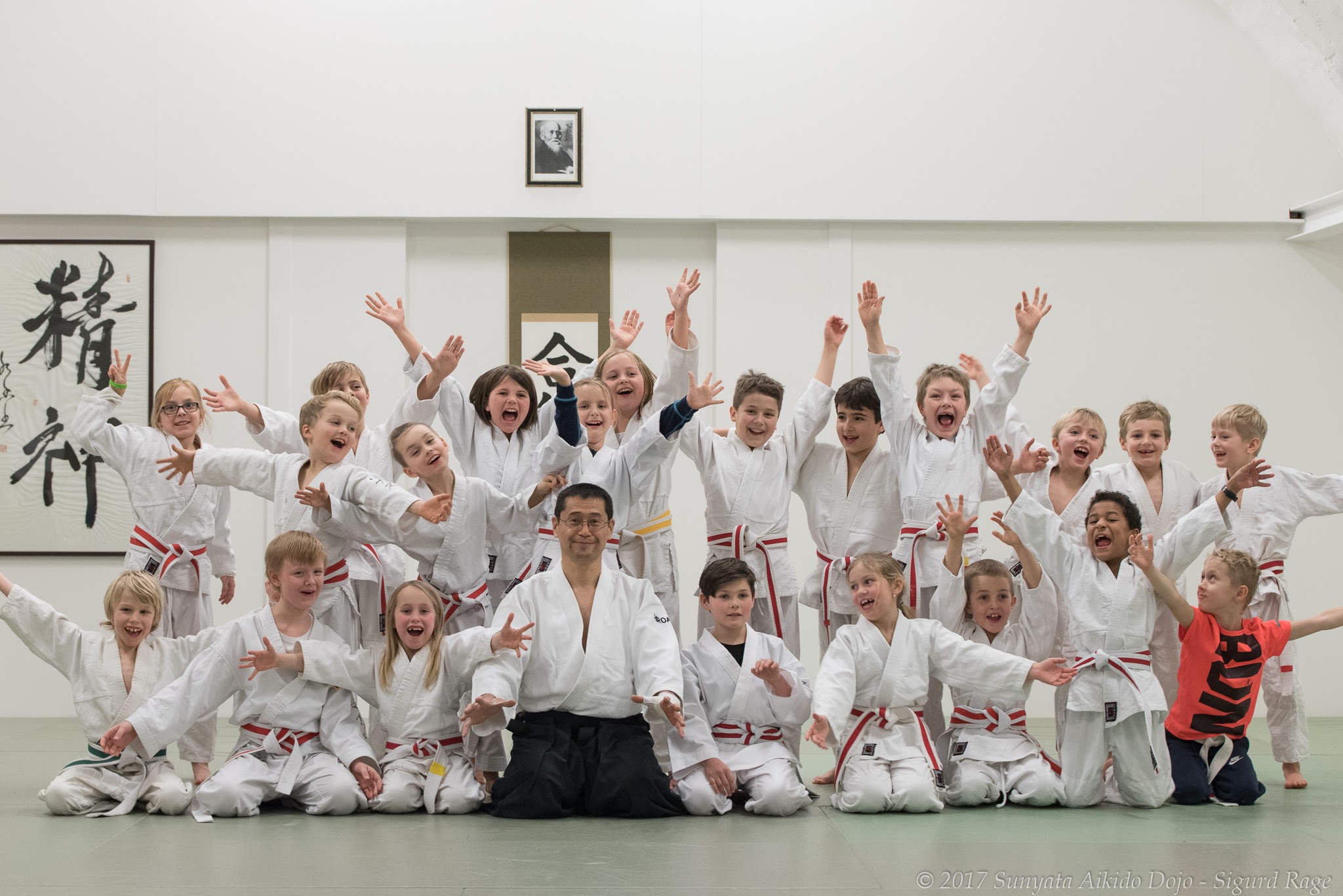Etiquette and rules
- It is a training in vigilance!
- We are in Norway so we follow normal Norwegian etiquette.
- In addition, we are training a Japanese martial art, so we use a lot of Japanese etiquette which is also practiced by other Dojos around the world.
- We bow (rei) when we go in and out of the Dojo.
- We take off the hats and shoes, putting them neatly on the shoe shelf or in the right row.
- We change quickly, use little space in changing rooms, and are a bit quiet and show consideration if a class is in progress. The same applies when we are in common rooms.
- Practice proper hygiene when using the toilet, and keep the place clean.
- Wash feet before exercise.
- Use a clean training suit (gi).
- Wear slippers after removing shoes. Put them neatly at the edge of the mat when walking onto the mat.
- We do a small bow when we go on the mat and off.
- We start and end our training in a line. We make a group bow with the teacher towards the center of the room (shomen, where a calligraphy and a picture of the founder hangs). Afterwards the teacher turns, and we greet the teacher and the teacher greets the participants.
- During training, if you are asked to work as uke for the teacher, perform a sitting bow to the teacher at the start and end of demonstration.
- We do sitting bows to each other before we start and when we finish. We do the same procedure when changing partners and when working with the instructor.
- If you have to leave the training before it is finished or for the toilet, tell the instructor!
- We train cooperatively when we learn. We do not make it difficult for our partner during training, and we do not block! We are all here to learn, so we try to follow the instructor as much as possible. That’s the point. Those who participate in training are not instructors! If you are a man, do not teach women and think that you know better; this is a common phenomenon ! Of course, one can give hints and give small tips during training that are in the spirit of the teacher. A good rule of thumb is keep your mouth shut.
- There are a lot of highly trained people on the mat. Be sure to train with them a lot; they have more experience and can help you find your skill! We all want to learn more. It’s selfishness, but this can be good in many ways. Become a humble egoist!
- When we have a Japanese instructor, pay extra attention to the rules and title the instructor with sensei (for example: Hiroaki sensei).
- Everyone participates with cleaning the carpet, washing the mat, and maintaining the Dojo.
- We fold Hakkama after training, making sure that there is room if people want to train more.
- Use weapon bags for transporting training weapons to and from the Dojo and at seminars.
- We make sure that the area in front of the Dojon is nice to clear. In the winter we help to clear snow.
- As an overnight guest, donate a little to the Dojo (in the donation box) and help keep the dojo extra clean.
(Some people love titles! This has nothing to do with respect in Aikido. You are here to learn like everyone else).
- Mouliko Halén is sensei, but also Scandinavian from Sweden. Call him by his first name. This applies to most instructors from Scandinavia and Europe, for example Christian Tissier and Jorma Lyly.
- If they are visiting Sunyata Aikido Dojo, it is they who adapt! In Sweden in 1967, the titles Herr, Fru, Ni, De and Herr Doktor were dropped.
- Some countries have not yet done so, e.g. Germany). Adapt to the rules that apply there.
- In Japan be sure to use titles!
- Sunyata Aikido Dojo is an “International Friendship Dojo”, and we use first names!
Mouliko Halén, Dojo cho

